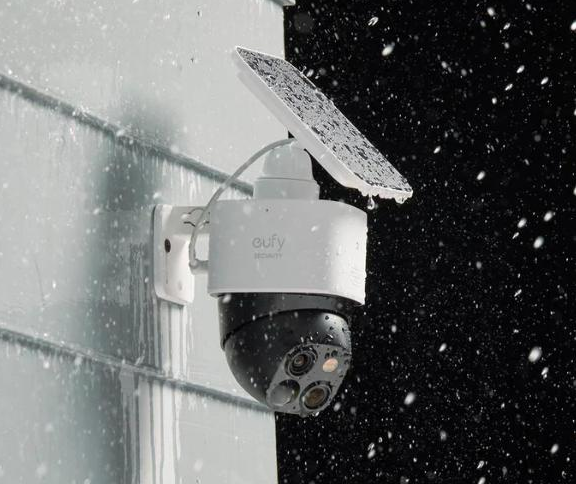Choosing the right outdoor camera is essential for safeguarding your property. A reliable camera must endure harsh weather, deliver clear footage in all lighting conditions, and integrate with your smart devices. This guide outlines the key features you should evaluate—such as durability, image quality, and power sources—so you can confidently invest in a system that enhances your home’s protection and meets your personal security preferences.
Understanding the Importance of Camera Durability
Weatherproofing and Waterproof Ratings
Outdoor cameras must perform well despite exposure to rain, snow, or dust. Models with IP65, IP66, or higher ratings offer strong protection against water ingress and environmental particles. This level of weatherproofing ensures the camera operates continuously regardless of the climate. For those in regions with extreme conditions, checking these ratings helps prevent outages and prolongs your device’s life in challenging outdoor settings.
Materials and Build Quality
The external build of an outdoor camera influences how well it withstands environmental stress. Metal-bodied or polycarbonate-constructed cameras resist corrosion, impacts, and long-term wear better than cheaper materials. A strong casing also prevents damage from animals, falling debris, or minor accidents. Prioritize premium construction when investing in long-term outdoor security to avoid degradation that could compromise performance or create maintenance issues over time.
Resistance to Vandalism and Tampering
Tamper-resistant features ensure your security camera continues operating when someone tries to interfere with it. Cameras equipped with vandal-proof housings and locking mounts resist damage from forced attempts or blunt impact. Some models also offer tamper alerts, notifying you immediately of any obstruction or physical breach. These features are especially important in public-facing or high-traffic areas vulnerable to deliberate interference.
Evaluating Video Quality in Outdoor Cameras
Resolution: What’s Right for You?
Camera resolution determines how well you can see and identify activity around your property. While 1080p is suitable for most households, larger areas may benefit from 2K or 4K resolution. These higher formats enable more accurate zoom and detail recognition. Choose a resolution that balances your desired clarity, network speed, and available storage capacity to ensure efficient, high-quality recordings.
Day and Night Video Clarity
Clear footage is critical for both daytime and nighttime monitoring. Look for cameras with infrared night vision, low-light sensors, or integrated floodlights that brighten scenes without alerting intruders. A good camera captures balanced video regardless of lighting variations. Reliable low-light performance ensures you don’t miss important events that occur during early mornings, late evenings, or overnight.
Color Accuracy and Picture Detail
Cameras that reproduce natural colors and clear images are more effective for identifying people, vehicles, and objects. Wide Dynamic Range (WDR) helps the lens adjust exposure across varying light conditions, so both shadows and bright areas are visible. High-definition lenses and precise color rendering also help security footage serve as trustworthy evidence when needed.
Smart Features for Enhanced Security
Motion Detection Sensitivity and Alerts
Smart motion detection improves surveillance by triggering alerts only when meaningful activity occurs. Choose cameras that allow you to adjust sensitivity and define detection zones. This helps filter out irrelevant movements, like trees swaying in the wind or passing animals. Real-time notifications sent to your phone or email keep you informed of activity even when you’re away from home.
Two-Way Audio Communication
With two-way audio, you can speak to visitors or warn intruders without being on-site. This feature is ideal for interacting with delivery personnel or responding to suspicious behavior. Look for systems that include clear microphones and speakers with noise cancellation. It adds an active deterrent to your camera, turning it from a passive observer into a responsive communication tool.
Remote Access and Control via App
Controlling your camera remotely through a mobile app adds convenience and flexibility. These apps let you live-stream footage, change settings, review past recordings, and receive motion alerts instantly. Ensure your chosen camera supports a well-rated, user-friendly app. Remote access puts security at your fingertips, enabling real-time response no matter where you are.
The Impact of Power Supply on Camera Performance
Wired vs. Wireless Cameras
Power source plays a big role in how and where a camera can be installed. Wired models offer consistent power and often better video transmission, but require a more complex setup. Wireless cameras are easier to install and more flexible in placement, especially in locations without outlets. Decide based on your willingness to manage cabling and your property’s access to electrical infrastructure.
Battery Life and Power Consumption
Battery-powered outdoor cameras need dependable battery life to minimize recharging. Look for energy-efficient models with long runtime and features like standby mode, which conserves power when inactive. Choose batteries with high capacity and fast recharging capabilities. Monitoring battery performance over time helps you maintain uninterrupted protection without frequent manual checks or sudden outages.
Solar-Powered Cameras: Are They Worth It?
Solar-powered cameras are ideal for sunny locations where access to wired electricity is limited. These eco-friendly systems use solar panels to recharge built-in batteries, reducing electricity usage and long-term costs. However, they may not be suitable for shaded or low-light areas. Assess your local climate and installation site to determine if solar is a practical and efficient power solution for you.
Conclusion
Choosing the right outdoor camera involves balancing key elements like video resolution, smart features, and physical durability. By focusing on how a camera performs in different conditions—day or night, rain or shine—you can confidently pick a model that meets your property’s needs. Power supply, remote access, and build quality all influence performance. With the insights from this guide, you can secure your home with a camera that provides dependable, long-term peace of mind.

